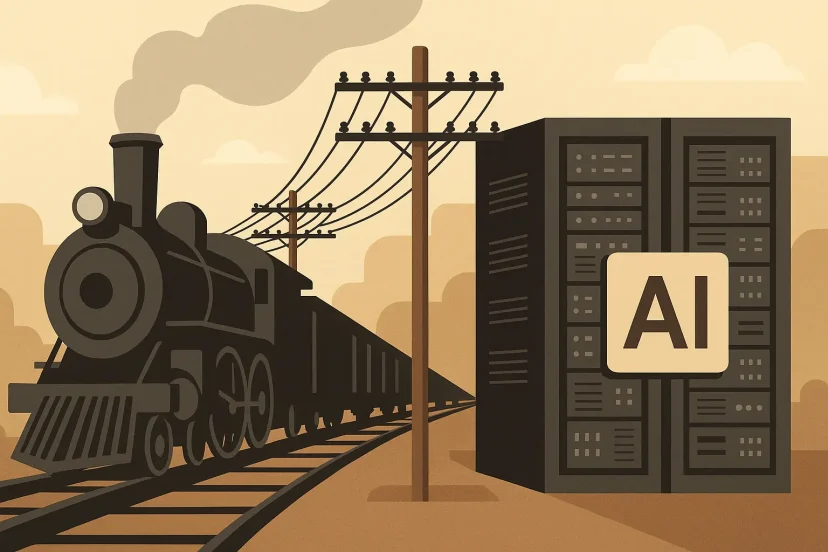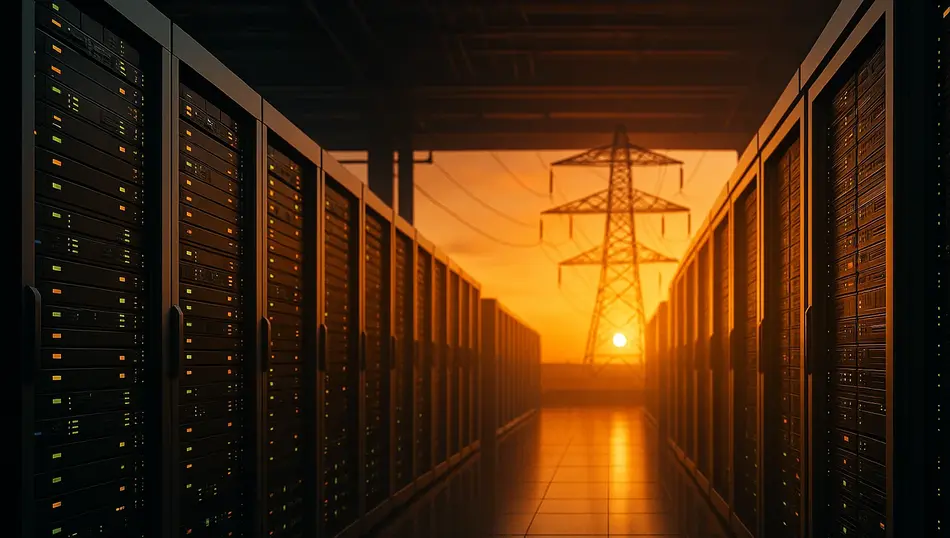President Donald Trump has hailed America AI investment wave as a symbol of national technological leadership. Yet beneath the triumphalist rhetoric, a sobering challenge is emerging: the country’s power infrastructure is straining under the weight of energy-hungry data centers.
According to industry reports, these facilities—the foundation of digital services, cloud computing, and artificial intelligence—now use an unprecedented 5% of all electricity in the United States. Operated by tech titans including Microsoft, Google, Amazon, and Meta, data hubs are drawing more power than entire mid-sized cities, raising questions about sustainability, infrastructure resilience, and consumer costs.
A New Economic Engine
The numbers driving the AI revolution are nothing short of staggering. Analysts estimate that in 2025 alone, America’s so-called “Magnificent Seven” tech firms — Microsoft, Amazon, Google, Meta, Apple, Nvidia, and Tesla — are projected to pour a record $364 billion into AI infrastructure.
That level of spending would bring data center investment close to 2% of U.S. GDP, putting it on par with historic infrastructure booms such as the railroad expansion of the 19th century and the telecom revolution of the late 20th century.
In fact, for the first time, the boost to GDP from AI-related infrastructure has surpassed the contribution of U.S. consumer spending, long considered the engine of American growth. Economists warn that without this surge of AI-driven investment, GDP growth might have slowed dramatically — or even slipped into contraction.
A Price Tag in the Billions
The construction and operation of these digital powerhouses do not come cheap. Building a 700,000-square-foot, 60-megawatt facility can cost between $420 million and $770 million, depending on location, labor costs, and power infrastructure requirements.
But the expenses do not stop once construction ends. Running such facilities requires vast amounts of electricity, as well as cooling systems that often depend on water.
According to a 2023 Microsoft report, 42% of the company’s water use worldwide came from water-stressed areas. This finding has drawn criticism from environmental organizations who contend that businesses are making shortages worse in areas that are already at risk of drought.
Grid Strain and Rising Costs
Communities near these facilities are increasingly grappling with the consequences. In states like Oregon, regulators are weighing raising electricity rates on data hubs to offset grid strain and shield consumers from higher household energy bills.
Local officials say the problem is not only the massive draw from individual centers, but also the pace at which they are proliferating. As AI workloads increase, companies must continuously upgrade and expand facilities, leading to what experts describe as an “arms race” in server farms.
Critics note that while tech giants reap the benefits of scale, ordinary households often shoulder indirect costs in the form of higher energy prices and water restrictions.
Power Your Business With the Right Talent
As data centers scale and costs rise, efficiency depends on people as much as infrastructure. Post your job on WhatJobs and hire skilled professionals to keep your operations sustainable.
Post a Job Now →Environmental and Strategic Risks
For policymakers, the AI boom presents a paradox. On one hand, it is fueling economic growth and helping the U.S. maintain its competitive edge against rivals like China. On the other hand, it poses clear risks:
- High Energy Intensity: Unlike traditional factories, data centers rarely plateau in energy use. As AI models scale, electricity demand grows exponentially.
- Short Lifespan: Many facilities become outdated in less than a decade, requiring costly upgrades or total rebuilds.
- Resource Strain: Dependence on electricity and water in stressed regions magnifies climate and infrastructure vulnerabilities.
Industry analysts argue that unless breakthroughs in efficiency are achieved, the U.S. risks locking itself into an unsustainable cycle of costly, resource-heavy expansion.
Echoes of Past Booms
Historians are drawing parallels between the AI data center surge and earlier eras of transformative infrastructure. Like railroads and telecom networks, today’s data hubs could become the foundation of an entirely new economic order.
But there’s a key difference: unlike railroads or telephone lines, which served the public directly, AI data centers primarily benefit private corporations. That has fueled debates over whether taxpayers, ratepayers, and local communities are unfairly subsidizing corporate profits.

Looking Ahead
For now, the trajectory appears set: global data center capacity is projected to expand by nearly 80% over the coming years, with much of that growth concentrated in the United States.
Trump and other political leaders continue to champion the boom as proof of America’s innovation edge. Yet economists warn that unless infrastructure, regulation, and sustainability measures keep pace, the AI backbone could become more of a burden than a boon.
As one analyst put it, “AI may be the new railroads, but railroads didn’t need to be rebuilt every five years.”
FAQs
1. Why are AI data centers consuming so much electricity?
AI workloads, especially training large language models, require massive computational power. This translates into high electricity demand for servers and equally large power requirements for cooling systems that prevent overheating.
2. How much do these facilities cost to build and operate?
A typical 60-megawatt facility can cost $420–$770 million to build. Operating costs include electricity, water for cooling, staffing, and maintenance — often running into tens of millions of dollars annually.
3. What environmental concerns are being raised?
Critics highlight the water usage in drought-prone regions and the strain on local power grids. Microsoft reported that nearly half of its water use in 2023 came from water-stressed areas, intensifying debates about sustainability.
4. Could the AI data center boom slow down U.S. economic growth instead of boosting it?
Yes, if costs spiral or infrastructure bottlenecks worsen. While the AI surge currently props up GDP, facilities are short-lived, resource-intensive, and costly to maintain, raising concerns that growth may be unsustainable without new breakthroughs in efficiency.




